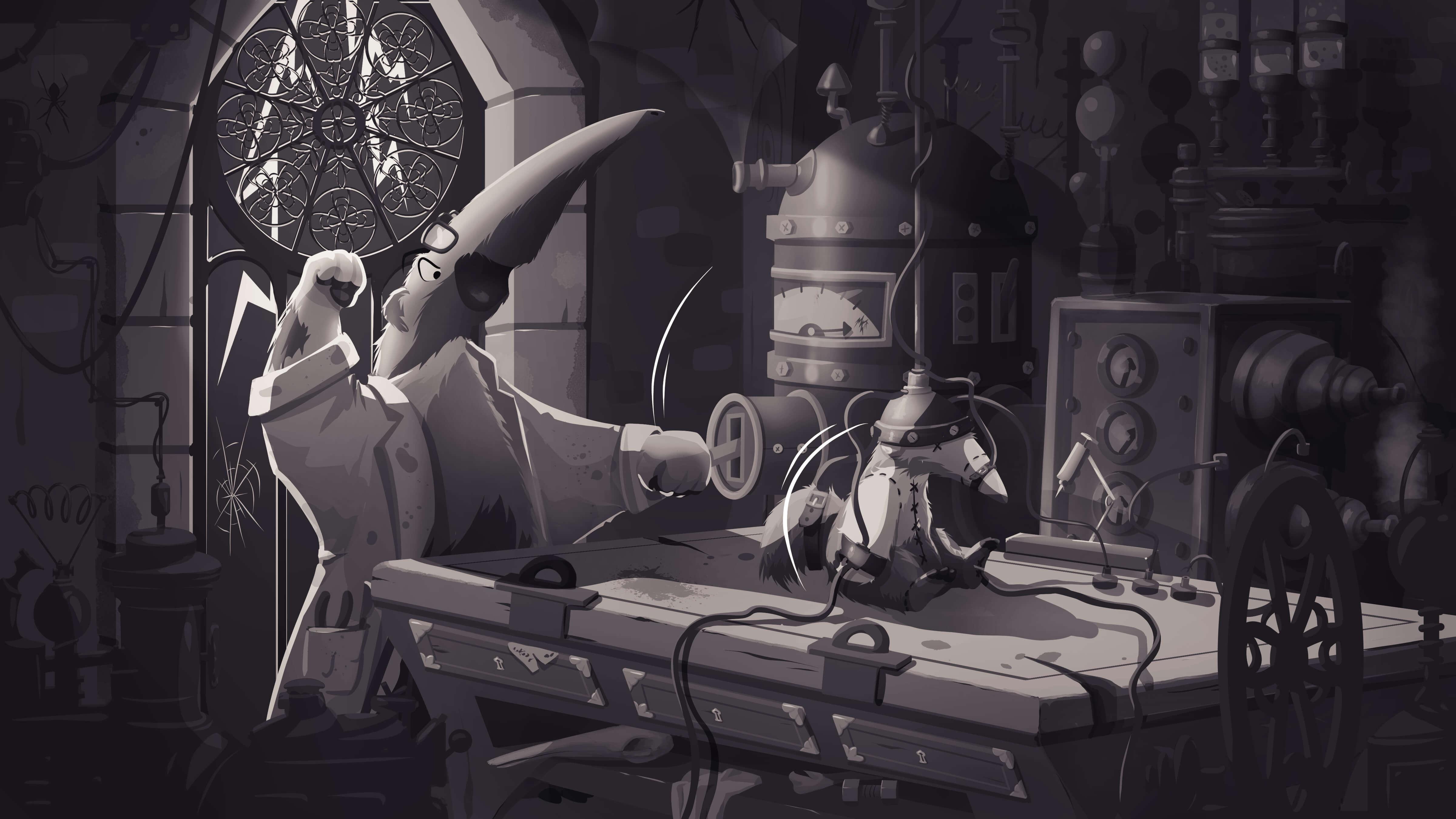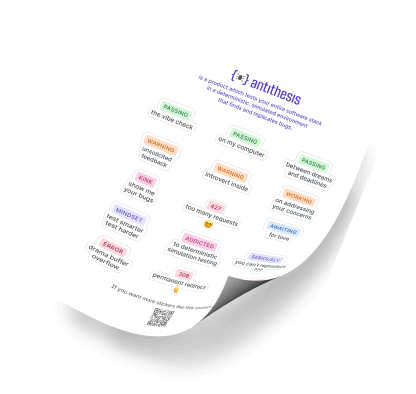They don't even have eyes

Imagine that you are an alchemist. The traditional goal of alchemy, the transmutation of base metals into gold, was demonstrated by Glenn Seaborg in 1980, and is today the domain of process improvement engineers — so you decide to instead work on the problem which Paracelsus called “an arcanum above all arcana”, the manufacture of a homunculus. You enter the field of Alchemical Intelligence.
A common exercise for practitioners of this art is the preparation of a homunculus capable by nature of completing a certain quest. Many quests of varying difficulty may be obtained and easily conjured, from the Temples of Montezuma to the unconquered Dungeons of Doom.1 Even the simplest of quests, however, poses great difficulties for a homunculus, and the production of a creature with the powers to complete it is a field of great study for scholars today.
The Scale of Anubis
There are several procedures for the creation of homunculi. In the method of Geber, which is most commonly practiced today, the alchemist encloses an assemblage of matter, distilled and purified, in a vessel of concentric spheres, to undergo controlled putrefaction into a humanlike form. As the nature of a man is, according to the astrologers, given by the positions of the stars under which he is born, so is the nature of a homunculus given by the ingredients placed into the vessel and the configuration of the spheres. Certain ingredients and configurations produce homunculi whose inborn natures suit them well for their quests, and their success at the quest is determined by their nature — as Paracelsus says, “because by Art they receive their lives, by Art they receive their bodies, flesh, bones, and blood: by Art they are borne; wherefore Art is now incorporated with, and imbred in them.”2
The nature thus produced, however, cannot be predicted. The number of possible homunculus natures capable of succeeding in any given Quest is very low, and the effects of the configurations of the matter and the spheres on the nature given to them are matters of great obscurity, arcana concealed by the subtlety of this art — but is known to the wise that, through progressive distillation and recombination, the nature of a homunculus may be refined, and brought by trial and refinement closer to success. The alchemist, therefore, constructs a Scale of Anubis, an apparatus on which the heart of a homunculus, that part which contains its nature and inborn knowledge, is weighed after its failure and death. The Scale of Anubis encodes a distinction of degrees and measures the heart of each homunculus by its progress in its quest; those it deems worthy are added to the assemblage of matter to next be distilled, and in this way the next homunculus is made more perfect for its quest.
To complete a quest through the creation of homunculi, then, the alchemist creates a single homunculus which by its nature can complete that quest, by creating innumerable candidate homunculi, refining them over many generations, and distilling those judged best by the Scale at each turn, and by designing the Scale to navigate through the space of possible homunculus natures toward a small, uncharted island of natures competent to complete the given quest.
The Many-Branching Oak
How difficult is it for a homunculus to complete a quest? Suppose that the quest at hand is to climb a great oak with a thousand trunks, each trunk bearing a thousand branches, each branch bearing a thousand twigs, and to reach the Eagle of Wisdom that roosts at its top. Suppose, in addition, that each branch only reaches upward: that its base is closer to the ground than any subsequent point. If our homunculus is bound by magic to only travel up until it finds the eagle, and to expire at any dead end, it will take many trials indeed to produce a homunculus whose inborn nature grants it the pathfinding skill to find the Eagle; but if it’s permitted to turn back, any homunculus with two simple faculties will suffice: first, the faculty to climb any branch of the tree, and second, the faculty to recognize branches that lead only to dead ends, or to places it has already seen, and turn back. Our homunculus may have to visit every part of the tree, but if it can turn back, it’s guaranteed to find the Eagle eventually.3
In one sense, this is hopelessly contrived. Constraining the homunculus to only travel upward would clearly limit its abilities: one wrong branch dooms it to failure. But in another sense, it’s the default condition of all endeavors: one must proceed ever upward in time, from past to present to future. If our homunculus falls afoul of the evil wizard of the dungeons, or is devoured by one of Montezuma’s ambulant skulls, it will be as doomed as an upward-bound one that takes a wrong turn traversing the Great Oak: it can’t turn back time.
But what if it could?
The Dagger of Time
Temelus of Alexandria, in his work De obrussis simulationis ætiarchico programmatarum, describes the creation of an artifact known as the Dagger of Time. If a magic circle is engraved with this dagger, any wielder of it who stands therein is granted the power to reverse the flow of time, to unmake any action made after the time of the circle’s completion.4
This artifact, while powerful, has certain limitations. The magic circle has no power when drawn above a certain size, for instance, so one cannot circumscribe the whole world, or even a room; but one may, with care, circumscribe a Quest. In addition, the circle causes changes to the flow of time, and requires energy to sustain, and special techniques to pass anything in or out. The instrument is powerful, but not without its limits.
If a homunculus could judiciously wield the Dagger of Time, what results might obtain? What simplifications to the laborious Geberian process might this unlock? One such application is that a homunculus equipped with the Dagger would no longer need foresight, or the ability to predict the future. This may seem to be a feat outside human abilities, let alone homuncular ones — indeed, many believe the power of prophecy to belong to the realm of black magic, a force which mortals must not try to command — but it is known to the wise that all creatures which act with intent upon the world are imbued with an amount of foresight. Consider the practice of alchemy — if this procedure is followed, that result will be obtained — or even mundane activities: if I pick up an egg and drop it, it will fall and most likely break.
Though the art of foresight is commonplace, its origin is hidden, and only with great difficulty may a homunculus be imbued with the merest amount of it — but a simulacrum thereof may easily be granted to one who bears the power to reverse the flow of time. Suppose a Quest requires an egg to be kept in one piece. The homunculus must either have the foresight not to drop it or wield the Dagger of Time, with which it can simply unmake any branch of time in which the egg falls and cracks. A homunculus with the Dagger has no need for foresight: all it needs is the coordination to move through its quest and the ability to recognize progress.
They don’t even have eyes
Consider again the Quest of the Many-Branching Oak. The oak has a thousand trunks, each with a thousand branches, each with a thousand twigs. One such twig is the abode of the Eagle of Wisdom. A homunculus bound never to turn back cannot succeed by luck alone: to reach the Eagle of Wisdom without ever turning back, it must choose wisely from each thousand, and for it to choose wisely, it must have a perceptual apparatus and the capacity for wisdom. The alchemist, then, must ensure that these faculties be instilled, and must, if using the method of Geber, construct a Scale of Anubis by which to judge the partial progress of unsuccessful homunculi toward the goal, to purify and distill those which have best developed these faculties, and refine them in a special apparatus designed to encourage their development.
Could a homunculus not so bound succeed by luck alone? It may seem so: a simple homunculus could be constructed to visit every part of the tree. But those who apply the methods of the mathematicians will find that the tree is too vast to visit in reasonable time: there are ten billion places the eagle could be. The ability to reverse course alone will not grant it victory; it must still have wisdom — the very same wisdom contained in the Scale of Anubis!
If the Scale can be made to provide instant feedback to a still-living homunculus, it needs no other faculties than to traverse the Great Oak and to follow the Scale. If it strays from the path of the Eagle of Wisdom, it can sense this at once and turn back. Given a Scale which knows the path to the Eagle — the true trunk, the true branch, and the true twig — and harshly judges false trunks and branches, our traversal-homunculus can easily succeed: its options are reduced from ten billion to three thousand.
The great arcanum of the Dagger of Time is hidden inside the mundane apparatus of the alchemist: for the method of Geber to succeed, the alchemist must construct a scale of Anubis which can judge progress in a quest — against what else could it weigh the hearts of the homunculi? — but a homunculus equipped with the Dagger of Time can make progress by the faculty of the scale alone. This is the thesis of our research.
With the combined powers of the Dagger of Time and real-time feedback from the Scale, even the simplest of homunculi can complete a Quest. In the Quest of the Great Oak, the Scale’s ability to distinguish locations close to the Eagle from those that are hopelessly far is all the sensory apparatus a homunculus needs. As long as it uses the Scale to sense its mistakes and wields the Dagger to reverse them, the Eagle can be found by a homunculus that climbs the tree by arbitrary, ever-changing whim. Our experiments have revealed that several well-known Quests can be completed with the simplest possible homunculi, which act by pure chance and lack the cognitive power and complex sensory organs that are so laborious to refine. They don’t even have eyes. But with the Scale as a guide, they don’t need them.
Secrets of the alchemists revealed
As part of our research at Antithesis, we train autonomous agents to beat video games — to explore the state tree of video games and find the rare victory state at the end. This is common in the AI world, but because we’re a tree fuzzing company, we do it differently. The traditional AI approach is to use some metric of incremental progress (a strategy, as we call it, or a scale of Anubis) to grow and refine an extremely sophisticated generator of inputs (a tactic, or a homunculus) capable of completing one-shot problems. But because the tree fuzzing model comes with a procedure for transforming one-shot problems into problems on which incremental progress is possible — the deterministic hypervisor, the Dagger of Time — we can succeed with much simpler tactics.
To beat Gradius without the Dagger of Time, for example, an agent would need to either get astronomically lucky or have some idea of how not to die. “Some idea of how not to die” is complicated, though - it would have to know that there are objects in the game world, that one of those objects is “you”, that other things will kill you if you touch them, and that being killed is bad. It would also need the ability to predict the trajectory of bullets, to react to enemy ship patterns, and so on. But with the tree fuzzing model, we can beat the game with very simple input generators: we generate a sequence of random button toggles, and if anything bad happens to our ship, we rewind and try a different sequence instead. Gradius is tactically simple for an NES game — we have a platforming tactic for games like Metroid and Super Mario Bros. — but more tactically complex than our exploration of production systems, which can find real bugs with just random bytes!
Our Dagger of Time turns intractable bugs into ones that can be found by mere eyeless homunculi. To learn more about our uses of alchemical intelligence, see What is Antithesis?





